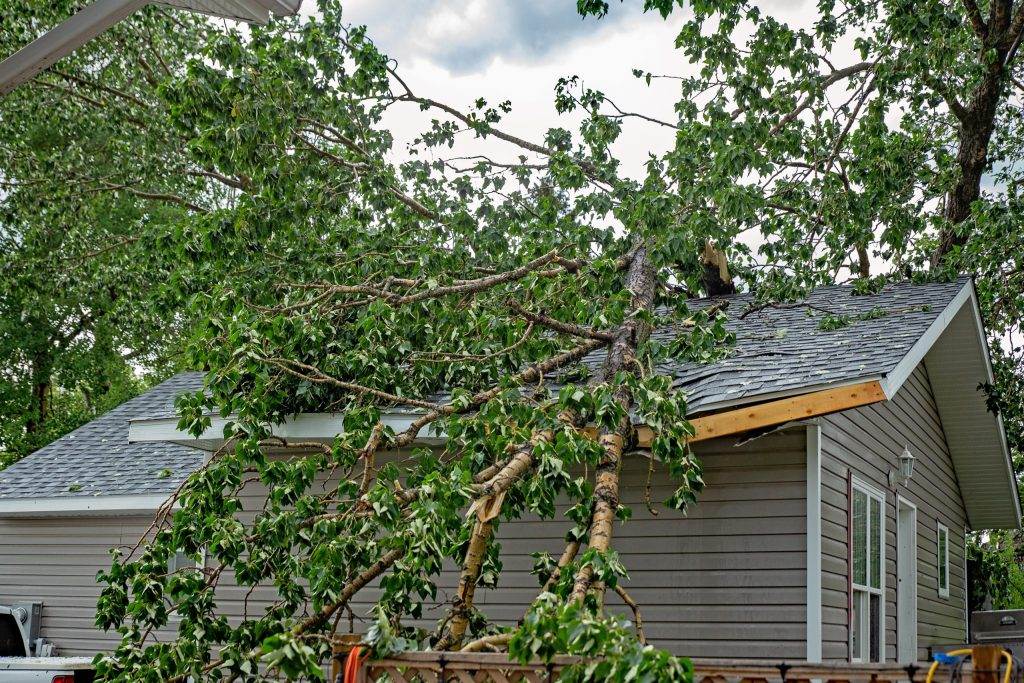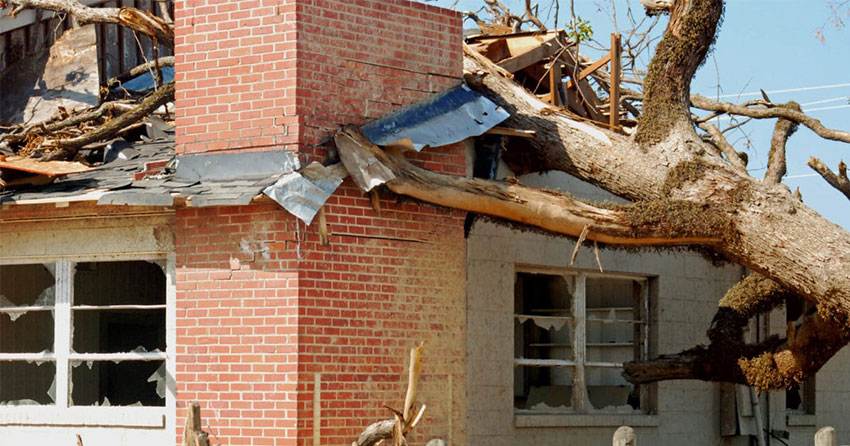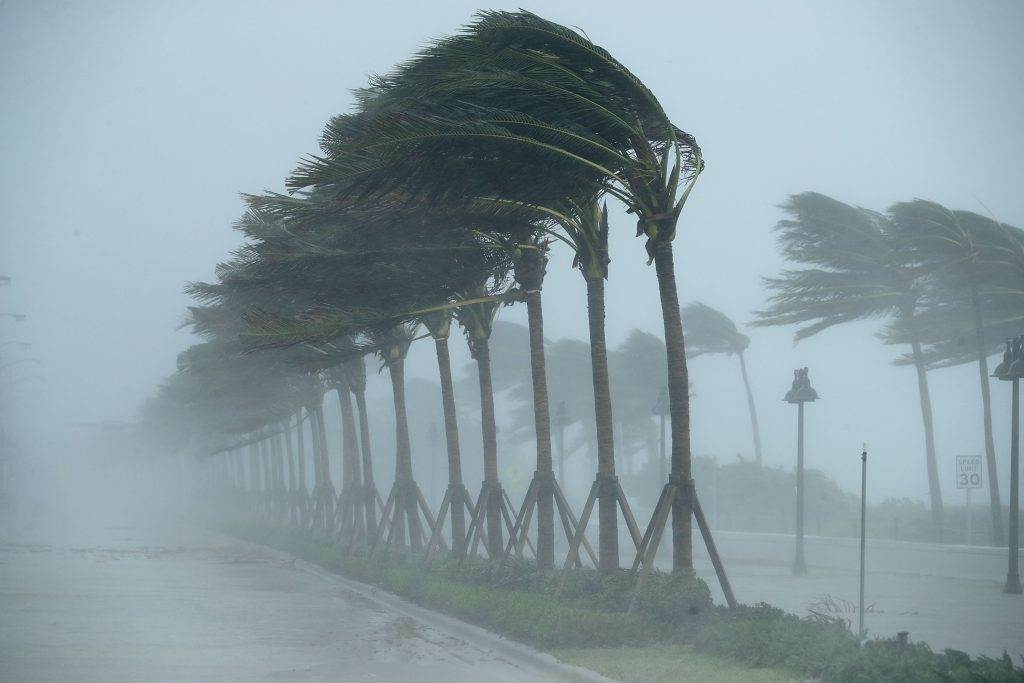In this article, we will discuss whether or not a Category 4 hurricane can break windows. Many people may be curious about this, as hurricanes are known to be extremely powerful and destructive forces of nature. We will explore the factors that contribute to window breakage during a hurricane and provide insight into the potential risks involved.
When it comes to the strength of a hurricane and its ability to break windows, there are several variables to consider. The wind speed, the direction of the wind, the structural integrity of the building, and the type of windows all play a role in determining whether or not windows will be broken. While Category 4 hurricanes are incredibly powerful, capable of causing severe damage, whether or not they can break windows depends on these factors. It is important to take precautions and reinforce windows to minimize the risk of breakage during a hurricane.
Understanding Category 4 Hurricanes
Definition of a Category 4 Hurricane
A Category 4 hurricane is a powerful and extremely dangerous tropical cyclone. It is the second-highest category on the Saffir-Simpson Hurricane Wind Scale, with sustained wind speeds ranging from 130 to 156 miles per hour. These hurricanes are known for their destructive winds, heavy rain, and storm surge, and can cause significant damage to buildings and infrastructure.
Characteristics of a Category 4 Hurricane
Category 4 hurricanes are characterized by their well-defined eye surrounded by a circular wall of clouds. The wind speeds in these hurricanes can cause extensive damage to structures, uproot trees, and even cause complete destruction of small buildings. The heavy rainfall associated with Category 4 hurricanes can lead to severe flooding, posing a threat to both life and property.
Wind Speeds and Intensity of a Category 4 Hurricane
In a Category 4 hurricane, the sustained wind speeds can reach up to 156 miles per hour. These strong winds can cause significant damage to buildings, particularly those that are not properly designed or constructed to withstand such intense forces. The intensity of a Category 4 hurricane is capable of causing widespread power outages, crippling infrastructure, and even endangering human lives.
Impact of Hurricane Winds on Buildings
Forces Exerted by Hurricane Winds
The forces exerted by hurricane winds on buildings are immense. The wind pressure on a building increases with the square of the wind speed, meaning that even a slight increase in wind speed can result in a significant increase in the force exerted on a structure. These forces can cause windows to break, roofs to lift, and walls to collapse.
Effects on Different Types of Structures
Different types of structures are affected differently by hurricane winds. Older buildings, particularly those that were not constructed to modern building codes, are more vulnerable to wind damage. Buildings with large glass facades or weak points, such as unprotected windows or poorly secured roofs, are also at higher risk of sustaining damage during a Category 4 hurricane.
Structural Vulnerability in High Wind Scenarios
In high wind scenarios, buildings can experience significant structural vulnerability. The combination of the lateral forces exerted by the wind and the pressure differences between the inside and outside of a building can lead to structural failure. This vulnerability is particularly evident in buildings with low structural resistance, inadequate anchoring systems, or insufficient reinforcements.

This image is property of www.windowguysflorida.com.
Window Breakage in Hurricane Conditions
Factors Leading to Window Breakage
There are several factors that contribute to window breakage during hurricane conditions. The high wind speeds create a significant pressure difference across windows, causing them to flex and eventually fail. Flying debris, such as tree branches or loose objects, can also impact windows with enough force to cause them to shatter. the size and quality of the glass, as well as the strength of the window frame, also play a role in determining the likelihood of window breakage.
Effect of Wind Pressure on Windows
The wind pressure on windows during a Category 4 hurricane can be substantial. As the wind blows against the exterior of a building, it creates positive pressure, pushing against the windows. Simultaneously, there is negative pressure inside the building, pulling the windows inward. The combination of these forces can cause windows to fail, leading to glass breakage and compromising the integrity of the building envelope.
Importance of Window Protection
Window protection is crucial during a Category 4 hurricane to prevent window breakage and minimize potential damage to buildings. Strengthening windows and providing additional protection measures can help mitigate the risks associated with high wind speeds and flying debris. By implementing proper window protection, the overall structural integrity of the building can be improved, reducing the chances of window breakage and subsequent damage.
The Myth of ‘Opened Windows’
Debunking the Myth
There is a common myth that leaving windows slightly open during a hurricane will help equalize pressure and prevent window breakage. However, this is a dangerous misconception. In reality, leaving windows open only allows more wind and debris into the building, increasing the risk of damage and jeopardizing the safety of occupants. It is important to stay away from this myth and focus on implementing effective window protection measures instead.
Understanding Wind Flow and Pressure
To understand why the myth of ‘opened windows’ is false, it is important to understand the flow of wind and the pressure differences during a hurricane. Opening windows does not equalize the pressure; instead, it increases the amount of wind entering the building, leading to greater structural stress and potential damage. Keeping windows intact and properly protected is the key to reducing the impact of hurricane winds on buildings.
Proper Hurricane Preparedness Measures
Rather than relying on the myth of ‘opened windows’, it is essential to take proper hurricane preparedness measures. This includes securing windows with hurricane shutters or impact-resistant coverings, reinforcing weak points in the building envelope, and ensuring that the building meets the necessary building codes and standards for hurricane resistance. By following these measures, the risk of window breakage during a Category 4 hurricane can be significantly reduced.

This image is property of www.aspwindows.com.
Window Design for Hurricane Resistance
Impact-Resistant Glass Technology
One of the advancements in window design for hurricane resistance is the development of impact-resistant glass technology. This type of glass is designed to withstand the impact of flying debris during a hurricane, reducing the likelihood of window breakage. Impact-resistant glass consists of multiple layers of glass with a durable interlayer, making it significantly stronger than traditional glass.
Reinforcement Techniques for Windows
In addition to impact-resistant glass, there are other reinforcement techniques that can be used to enhance the hurricane resistance of windows. These include installing laminated glass, which consists of two or more layers of glass bonded together with a protective interlayer, and adding window film to increase the strength and shatter resistance of the glass. Reinforcing window frames and ensuring proper installation also play a crucial role in window resilience.
Building Codes and Standards
Building codes and standards play an important role in ensuring that windows are designed and constructed to withstand hurricane conditions. These codes specify the minimum requirements for window design and installation in high wind areas, taking into account factors such as wind speed, debris impact, and structural integrity. Compliance with these codes is essential to ensure the safety and resilience of windows during a Category 4 hurricane.
Testing and Certification for Hurricane Resistance
Testing Methods for Hurricane Resistance
To determine the hurricane resistance of windows, various testing methods are used. These tests simulate the effects of high wind speeds, flying debris, and water infiltration on windows to evaluate their performance under hurricane conditions. Some of the commonly used testing methods include the Large Missile Impact Test, the Wind-Driven Rain Test, and the Cycle Testing, which assesses the durability and long-term strength of windows.
Certification Programs for Windows
Certification programs provide assurance that windows meet specific standards for hurricane resistance. These programs assess the performance of windows based on rigorous testing protocols and require manufacturers to meet certain criteria to achieve certification. The certification labels can help consumers identify windows that have been tested and certified for their ability to withstand hurricane conditions.
Assurance of Performance and Quality
By choosing windows that are tested and certified for hurricane resistance, consumers can have confidence in the performance and quality of their windows during a Category 4 hurricane. These windows have undergone rigorous testing to ensure that they can withstand high wind speeds, flying debris, and other forces associated with hurricanes. Investing in certified windows is a proactive step towards protecting buildings and minimizing the risk of window breakage during a hurricane.

This image is property of www.defenselite.com.
Importance of Proper Installation
Window Installation Considerations
Proper installation is crucial for ensuring the effectiveness of window protection measures. During the installation process, various considerations must be taken into account, such as the proper fitting of frames, the use of appropriate fasteners and anchors, and the correct application of sealants. Neglecting these installation considerations can compromise the performance of windows, making them more susceptible to window breakage during a Category 4 hurricane.
Role of Proper Anchoring and Framing
Anchoring and framing play a significant role in the stability of windows during hurricane conditions. Windows should be securely anchored to the surrounding structure, using appropriate fasteners and reinforcement techniques. The window frames should also be designed and constructed to withstand the forces exerted by high winds, ensuring that the windows remain intact and effectively seal the building envelope.
Expertise and Professional Assistance
When it comes to window installation, it is recommended to seek the expertise and assistance of professionals experienced in hurricane-resistant window systems. These professionals can provide guidance on the selection of appropriate windows, ensure proper installation techniques, and address any specific concerns or challenges related to the building’s design or location. Their expertise can help ensure that windows are installed correctly and can withstand the forces of a Category 4 hurricane.
Window Protection Options
Storm Shutters and Impact-Resistant Coverings
One of the most common window protection options is the use of storm shutters or impact-resistant coverings. These coverings are designed to protect windows from flying debris and high wind pressures during a hurricane. Storm shutters can be made from various materials, including metal, polycarbonate, or impact-resistant glass. They can be manually operated or motorized, providing a convenient and effective means of protecting windows.
Plywood and Temporary Window Solutions
In situations where storm shutters or impact-resistant coverings are not available, temporary window solutions can be used, such as plywood. Plywood can be attached to windows using appropriate fasteners, providing a barrier against wind and debris. While plywood is not as effective as dedicated hurricane protection systems, it can offer some level of protection for windows during a Category 4 hurricane.
Role of Advanced Window Films
Advanced window films can also be used as an additional layer of protection for windows. These films are made of durable materials that strengthen the glass and increase its resistance to impact. Window films can be applied directly to the glass surface, providing an invisible layer of protection that helps prevent window breakage and reduce the risk of glass shards causing harm in the event of window failure.

This image is property of api.time.com.
Mitigating Window Breakage Risks
Building Location and Orientation
The location and orientation of a building can significantly impact the risk of window breakage during a Category 4 hurricane. Buildings located in high wind areas or along the coast are more susceptible to hurricane damage, including window breakage. Therefore, careful consideration should be given to the building’s location and orientation during the design and construction phase to minimize the risk of window breakage.
Landscaping Strategies for Wind Protection
Strategic landscaping can provide additional protection for windows during a Category 4 hurricane. Planting wind-resistant trees and shrubs near windows can help create a buffer zone that reduces wind speed and deflects flying debris. Proper landscape maintenance, such as regular pruning and removal of dead branches, also helps minimize the risk of debris impact and window breakage during a hurricane.
Alternative Window Designs for High Wind Areas
In high wind areas, alternative window designs can be considered to enhance hurricane resistance. These designs often feature smaller window openings, reduced glass area, and increased frame strength. They may also incorporate features such as impact-resistant glass, reinforced frames, and multiple locking mechanisms. Alternative window designs prioritize durability and resilience, making them better equipped to withstand the forces of a Category 4 hurricane.
Conclusion
In summary, a Category 4 hurricane can indeed break windows due to the high wind speeds and powerful forces it generates. The wind pressure and impacts from flying debris can cause windows to flex and fail, compromising the integrity of buildings during a hurricane. However, proper window protection measures, including the use of impact-resistant glass, reinforcement techniques, and effective installation, can greatly reduce the risk of window breakage. By prioritizing hurricane-resistant windows and implementing appropriate window protection options, buildings can be better prepared to withstand the destructive forces of a Category 4 hurricane.

This image is property of oceanimpactwindows.com.
